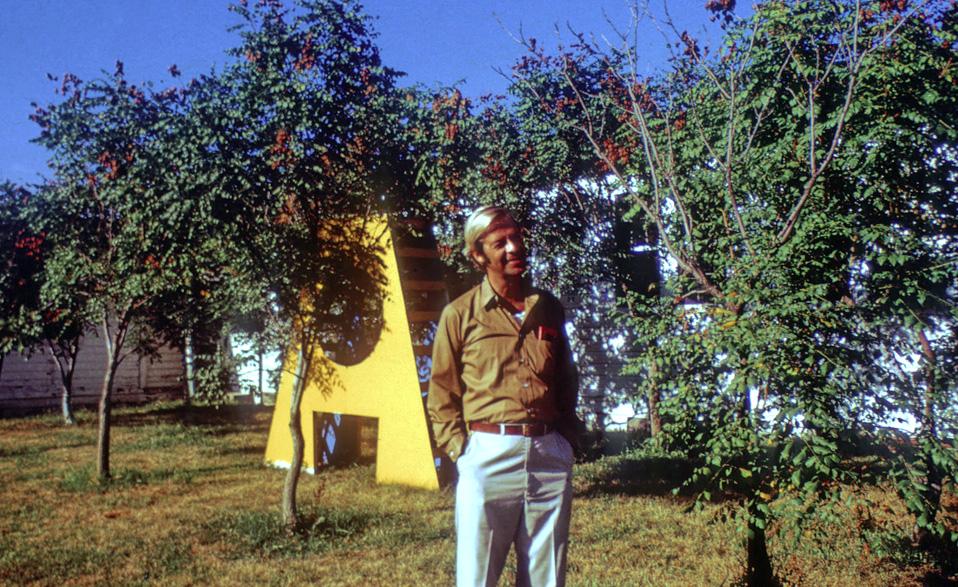The resilience of any structure lies in the strength of its design. Is it forward-thinking? Can it inspire connection and stir imagination? Does it serve its community? And will it stand the test of time? In many ways, the pedagogical and philosophical bricks-and-mortar that form the University of Maryland’s School of Architecture, Planning and Preservation were the design of John Hill, the school’s founding dean and “first architect.” Hill, who died on July 7, 2020, leaves behind a lasting legacy in the school he built, the faculty he recruited, the students he guided and graduated and the culture that endures today.
“John and I first met by phone in 1968 when I called him after reading a Washington Post article about Maryland’s new School of Architecture,” said Roger Lewis, professor emeritus and longtime friend and colleague. “A wonderful, 52-year professional and personal relationship resulted from that phone call. A book would be needed to document all the experiences that John and I shared, often with our families, friends and colleagues. He will be missed and lovingly remembered.”
As a young instructor and practitioner from Kentucky, Hill came to the University of Maryland in 1967 to create an architecture program—the first in the state—for the University of Maryland. He brought with him a white paper, detailing what the university would need to prove its mettle in the collegiate arena and to deliver the caliber of practitioners that had regional firms clamoring. His recommendations—all of which came to fruition—included space for collaboration and work; an innovative and socially-minded faculty; a hands-on, creative curriculum; and the eventual addition of like-minded programs like historic preservation, development, landscape architecture and urban studies. The inaugural faculty he recruited—which included Roger Lewis, Charles Moore and John Wiebenson–shared his affinity for exploration and “learning by doing.” The program’s first home was a temporary wooden WWII barrack on the south side of campus, an active teaching site where students were encouraged to rip open walls to see how they were constructed. Under his leadership, the architecture program was accredited within five years, an admirable feat for a new program. Hill helped develop the school’s first study abroad program—a trip to Europe and Tunisia—opening the eyes of students to new cultures and a vast architectural landscape.
“At the end of the day, we would sit around and talk about what we’d seen and what it all meant, and it had quite an impression on me,” said Steve Parker, FAIA, (B. Arch ’72) who was part of MAPP’s first graduating class and who studied with Hill abroad. “I think he left a lasting legacy on the school and helped create its personality. He influenced me and my career and was very meaningful to me.”
Hill’s intrinsic “forces for good” philosophy resonated with many of his students and faculty. The program’s infancy took place during the turbulent late ’60s and ran parallel with great social unrest. His vision for social justice and support of programs like John Wiebenson’s work with Martin Luther King, Jr.’s Poor People’s Campaign on the National Mall, set a tone that shapes the school’s outreach efforts today.
“John would certainly be behind today’s movements; we certainly were then,” said Parker. “I went into school totally clueless as a young student. My real interest was basketball. After two weeks in the program I never picked up a basketball again for 20 years. I was just devoted to the notion that architects can change lives. We can have an impact on our communities and change lives and I really feel that that came out of John and the first faculty.”
Hill received a Bachelor of Arts and a Bachelor of Architecture degree from Rice Institute, and a Master of Architecture in 1959 from the University of Pennsylvania. He served as a Lieutenant with the U.S. Navy from 1952-1955. He was a partner in the firm Graves-Hill and Associates from 1964-1967 and, before UMD, an assistant professor of architecture at the University of Kentucky.
Hill stepped down as dean in 1981, returning to serve as interim dean from 1989 to 1990. He maintained close ties with the school and, most notably, with its faculty and alumni, until his death. He is lauded for creating the kind of transparent culture that spurred a sense of community among faculty, but also between faculty and students, who often were on a first-name basis during his tenure as dean. He had a profound impact on students, maintaining an open door, a constant ear and a generosity in spirit that shaped the practice philosophy of many. He rarely sat behind a desk, preferring to meet students and faculty one-to-one on the couch or chairs in his office.
“Since my first day at Maryland, I always felt great support from John, and nothing but encouragement and reassurance in, for me, a new and challenging job,” said Professor Emeritus and former Dean Steve Hurtt.
Most people who knew him can only recount one time—ever—when he was angry: when students painted one of the columns in the Great Space purple, because he was so proud of the new building. In his role as dean, he was a rarity in that, despite his position and affinity for the pocket square, he exuded a quiet, warm demeanor that immediately made one feel welcome and important.
“John taught me the optics of assured confidence,” said Al Rubeling, FAIA (B. Arch ‘77). “He was a thoughtful, responsible individual who genuinely cared, and those are the things that have influenced me my entire life. It’s the whole package and, to me, that was John Hill.”

